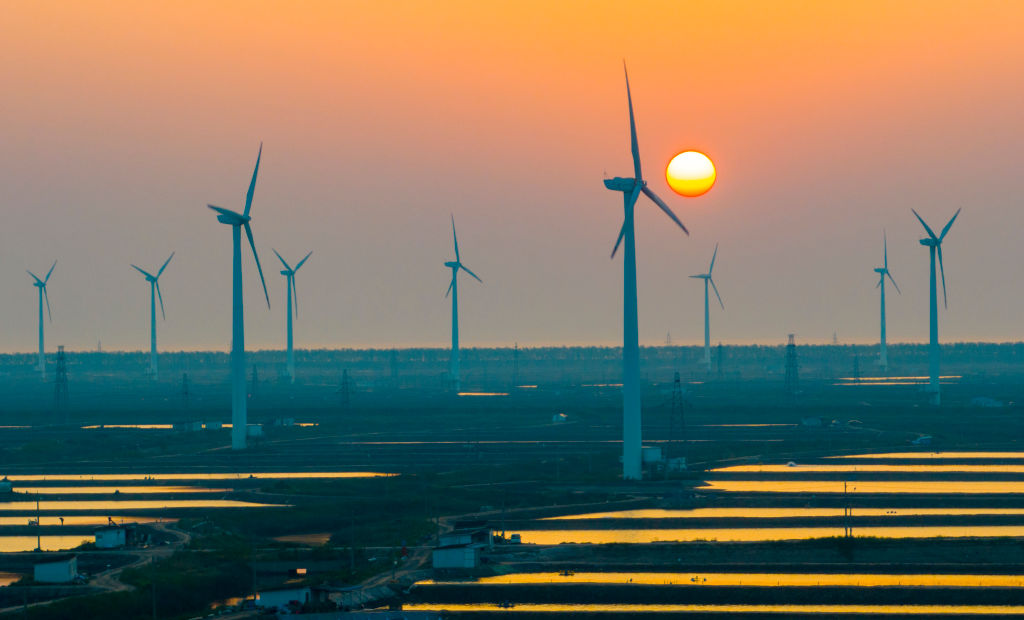
(To get this story in your inbox, subscribe to the TIME CO2 Leadership Report newsletter here.)
It almost goes without saying that the most important business story of the year has been and will continue to be rising interest rates and their ripple effects. This is a big topic with wide-reaching implications that we’re yet to understand fully. In this column, I want to touch on how interest rates will affect perhaps the most obvious climate-related capital investment: renewable energy.
On the surface, higher interest rates are really bad news for renewable energy investment. The reasoning is pretty simple: clean energy technologies like wind and solar require developers to borrow a lot of capital up front to build projects. Higher interest rates make it more costly to borrow that money and in turn can significantly increase the cost of a project. On the flip side, the cost of electricity generated by conventional sources—namely gas and coal—depends largely on the cost of the fuel rather than the cost of building the project in the first place.
Read more: Why Investing in Climate Action During a Recession Is a Smart Business Move
To understand the cost of generating electricity over the lifetime of a plant, energy experts often refer to what’s known as the levelized cost of electricity, or LCOE. That figure gives an average of what it will cost to produce electricity in today’s terms incorporating everything from construction to fuel to financing fees. A 2020 analysis from the International Energy Agency shows that a 5% rise in interest rates would increase the levelized cost of electricity from a natural gas plant natural gas plant only marginally while it could increase the cost of electricity from wind and solar by a third.
This dynamic made renewable energy an especially appealing investment in recent years. Borrowing money was cheap as the Federal Reserve maintained interest rates near zero. And, at the same time, the cost of generating wind and solar power fell dramatically thanks to technology improvements while fossil fuel prices were volatile, creating havoc for the companies purchasing electricity.
The higher-interest rate environment is now complicating the picture. After decades of sharp declines, the levelized cost of wind and solar is rising for the first time, according to an April report from Lazard, a financial services firm. In 2021, the average levelized cost of electricity was $38 per megawatt hour for utility-scale solar; this year, the cost has spiked to $60. Wind, too, has seen a similar increase.
Read more: Jigar Shah Is Using His $400 Billion Checkbook to Rapidly Scale Up Clean Tech
But it’s not all bad news for clean energy. Gas remains slightly more expensive, according to Lazard. And if you factor in the subsidies for producing renewable energy contained in the Inflation Reduction Act, the price of utility-scale solar and onshore wind energy could fall as low as zero despite the interest-rate headwinds.
Moreover, as fossil fuel prices are expected to remain volatile in the years and decades to come as geopolitical tensions over energy continue, more than half of new electricity demand through 2025 is expected to be met by low-carbon sources, according to a report from the IEA.
Many large companies are continuing to recognize the value of doubling down on clean energy despite the headwinds. Long-term agreements to buy clean electricity can lock in prices, removing volatility. The Clean Energy Buyers Association tracked nearly 150 deals last year from large corporations making long-term agreements to buy renewable energy to power their operations. Those deals amount to nearly 17 gigawatts of renewable energy, enough to power approximately 12 million homes.
For those pushing for a full throttle transition to renewable energy, it’s a promising sign, but the true test will come in the months to come as the new interest rate environment really settles in.
Correction, May 19
The original version of this story misstated the name of an organization. It is the Clean Energy Buyers Association, not the Clean Energy Buyers Alliance.
More Must-Reads from TIME
- Cybersecurity Experts Are Sounding the Alarm on DOGE
- Meet the 2025 Women of the Year
- The Harsh Truth About Disability Inclusion
- Why Do More Young Adults Have Cancer?
- Colman Domingo Leads With Radical Love
- How to Get Better at Doing Things Alone
- Michelle Zauner Stares Down the Darkness
Write to Justin Worland at justin.worland@time.com